Fernando Arrabal Terán (Melilla, 1932) has always considered himself an artist by paternal reference, being a painter and sculptor of objects in the purest pataphysical tradition. Despite this, he has also dedicated his career to other professions such as writer, poet or avant-garde and iconoclastic filmmaker.

He began his law studies in Madrid. In 1953, as a great theater lover, he was awarded the City of Barcelona Prize for his play “El triciclo“. Two years later he won a scholarship to Paris, where he has lived ever since. It was there that he met many of the leading figures of the 20th century, such as the French poet André Breton, Salvador Dalí and René Magritte, representatives of the purest Surrealism.
In 1963, together with artists Roland Topor and Alejandro Jodorowski, he created the “Panic Movement”, alluding to the Greek god Pan. This movement is an artistic expression that pretends to announce controlled madness as a survival in the face of a society in crisis of values (postmodern society). Its authors suggest a baroque universe, precise, of a delirious and mathematical world; a mixture of opposites: of love and hate, tragedy and comedy, bad taste and aesthetic refinement, sacrilege and the sacred, the individual and the collective; the ceremonial ritual: in transcendental acts of life; the oneiric, and sometimes cruel and satirical vision of life, the unreason of the world; the repetition of things, sometimes time is conceived in a circular way. “The object”, Arrabal writes, “is not to discover what confusion is, but only what can be said about it”.
As a poet, his titles stand out: “La piedra de la locura” (1984) and “Mis humildes paraísos” (1985). With “La dudosa luz del día” (1994), he won the XI Espasa Essay Prize.
For his polemic brilliance, within the best political writing, “Carta al General Franco” (1978) deserves a chapter.
Thus, concluding with a brief cinematographic repertoire, works such as “Viva la muerte” (1970), “L’arbre de Guernica” (1975), “Le cimetière des voitures” (1981), “El Emperador de Perú” (1982), “Adiós Babilonia” (1983) reached the top. In all of them, the formal risk, the fleeting perspectives and the highest aesthetic goal trace a visual offer that does not belong to any school. Art of great effect, as opposed to pure speculation.
In this way, Cayon exhibits for the first time in Spain "Amores imposibles", a series of paintings plagued with mystery in its purest humorous and personal sense. Together with "Historias universales", his other great Achilles heel, it was made between January 1 and August 24, 1985 and, due to its success, it was immediately exhibited in a gallery in the Latin Quarter of Paris.
In "Amores imposibles", Arrabal (through a preciousness in detail almost typical of codices) shows us painting as Yin and Yang as a symbol of unattainable possibilities and promises, an act of anguish and, at the same time, uneasiness, as a way of expressing an implicit song about irreducible ambiguity.
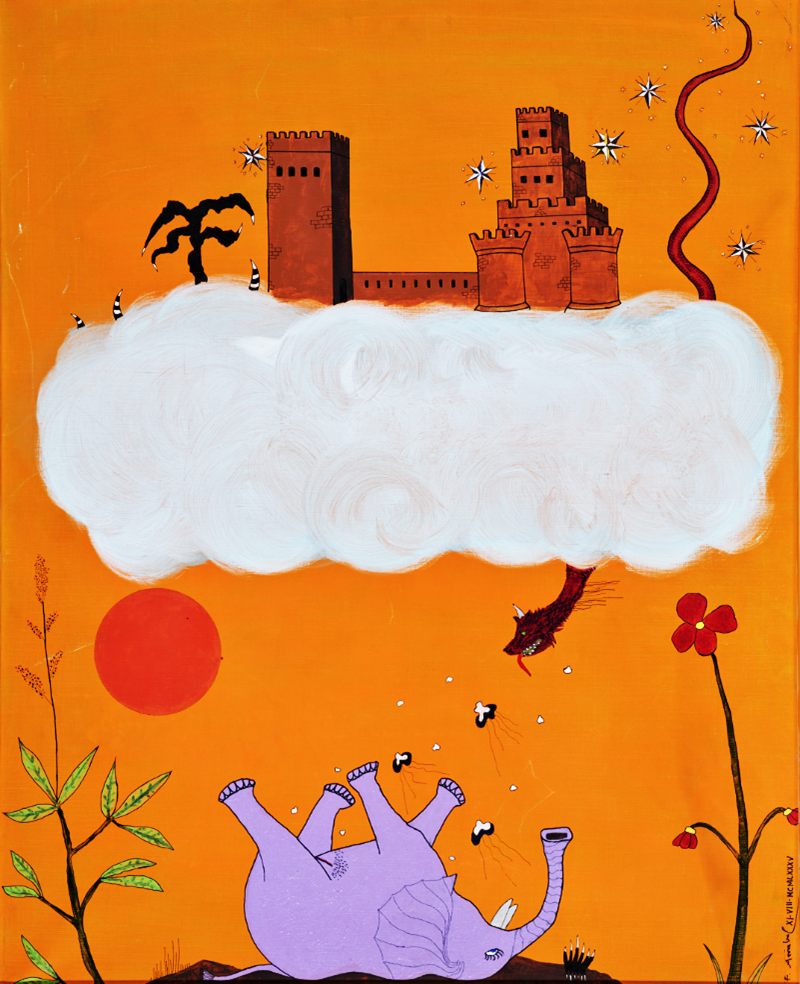
Amours impossibles
1985
Acrylic on canvas
81 x 65 cm.
AR002

Amours impossibles
1985
Acrylic on canvas
81 x 65 cm.
AR006
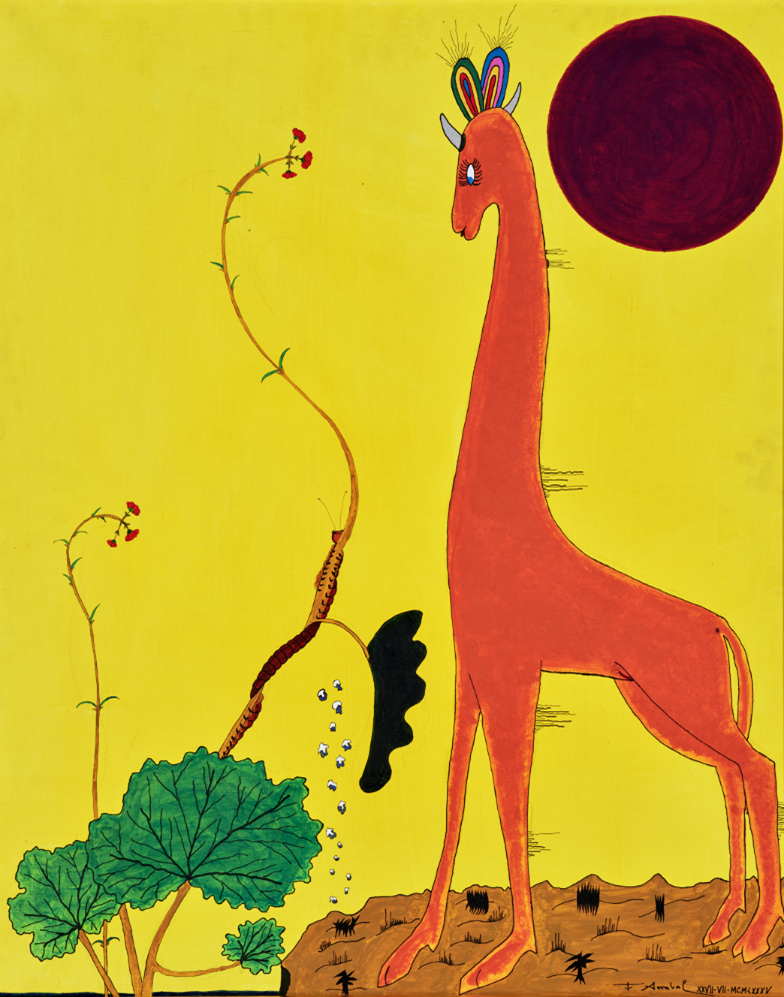
Amours impossibles
1985
Acrylic on canvas
81 x 65 cm.
AR008
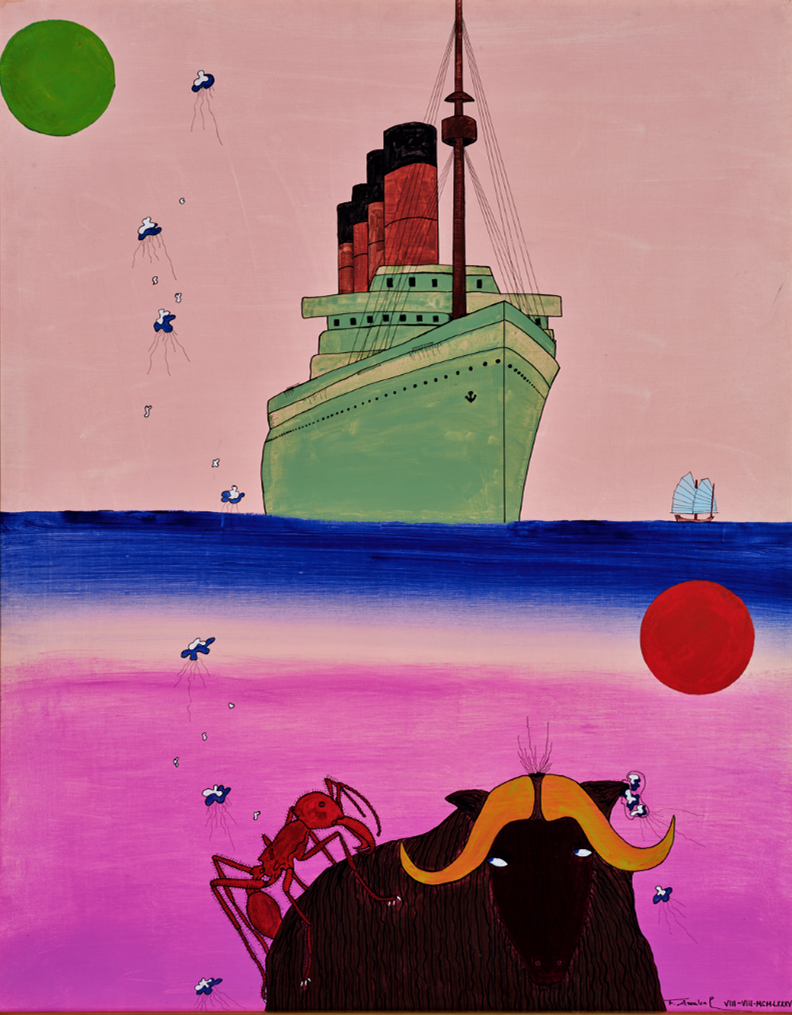
Amours impossibles
1985
Acrylic on canvas
92 x 73 cm.
AR017
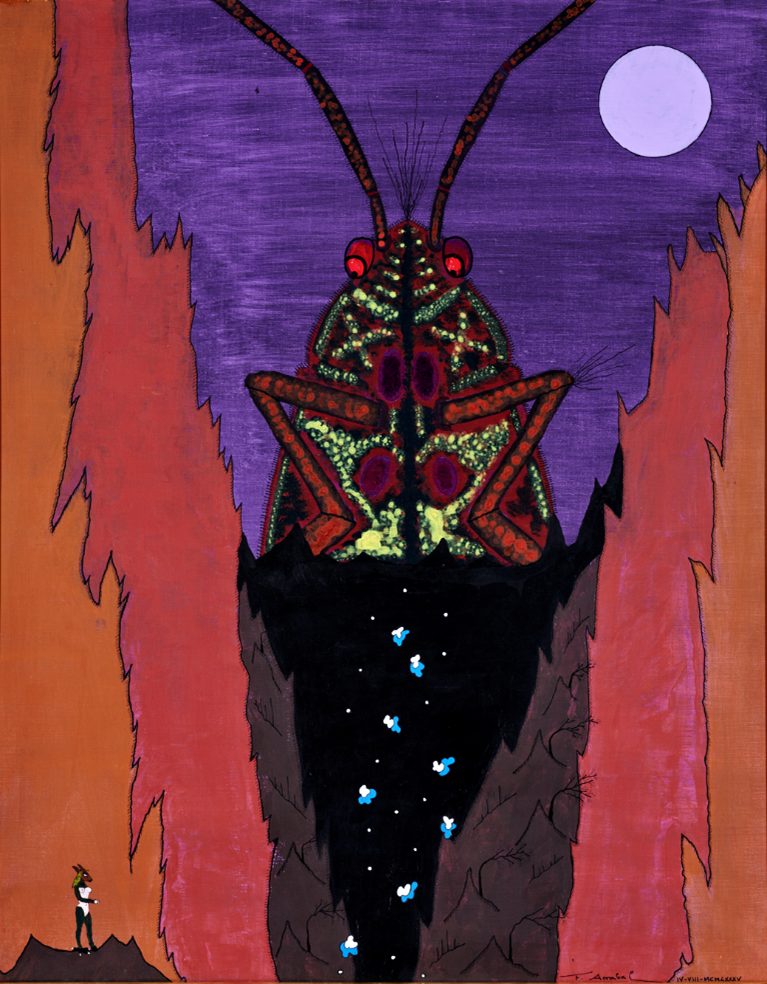
Amours impossibles
1985
Acrylic on canvas
95 x 71,5 cm.
AR004
Arrabal seems to offer us the autarchic character of each one of his works, their mute independence: neither the look, much less these words, will be able to close their possibilities of meaning, to grasp the work that is incorporated to the truth of what is the bearer of its own wandering.
His works are an exercise of dazzling situations, like a cosmos of furtive scenes that seem to happen in the manifestation of otherness, like a privileged symbolism that grants the possibility of meaning, something hidden under a signifying saying, an intense saying capable of producing the encounter between an abyss and a contact, mystery and mandate, art as another way of calling life.
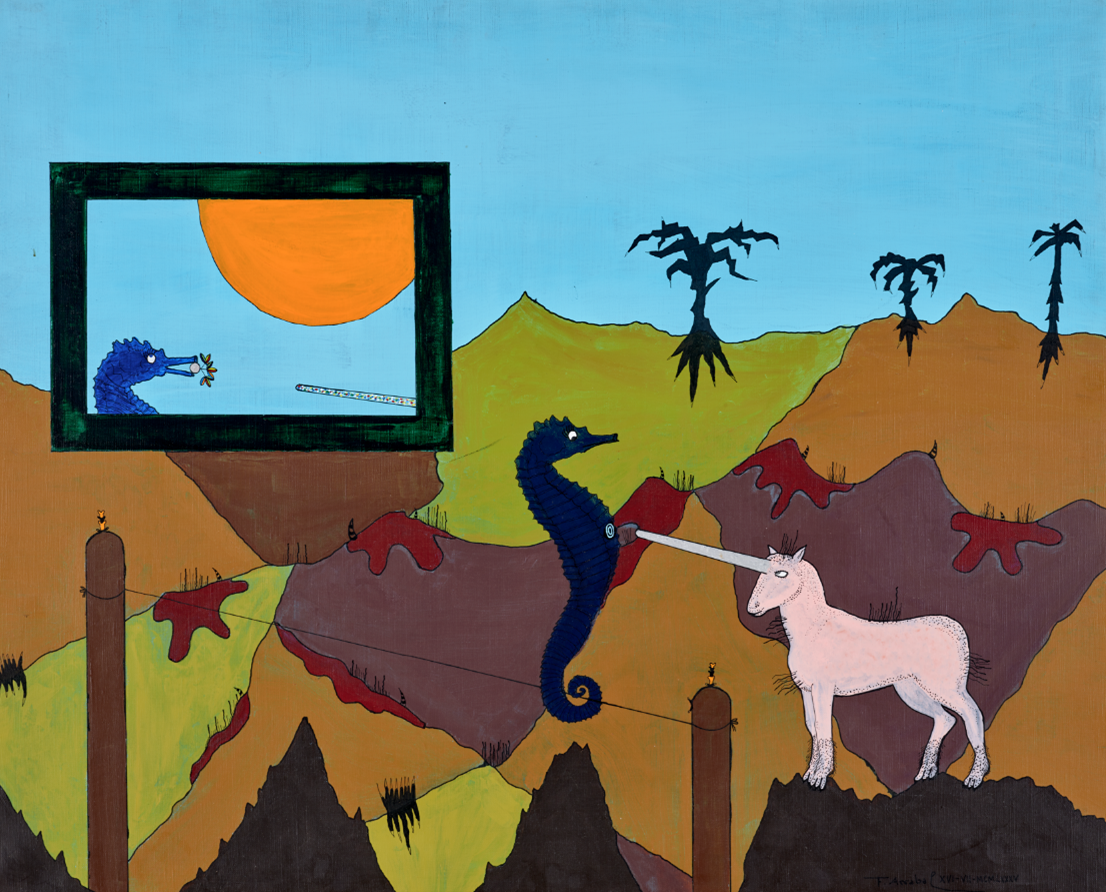
Amours impossibles
1985
Acrylic on canvas
71 x 95 cm.
AR012

Amours impossibles
1985
Acrylic on canvas
71,5 x 95 cm.
AR003
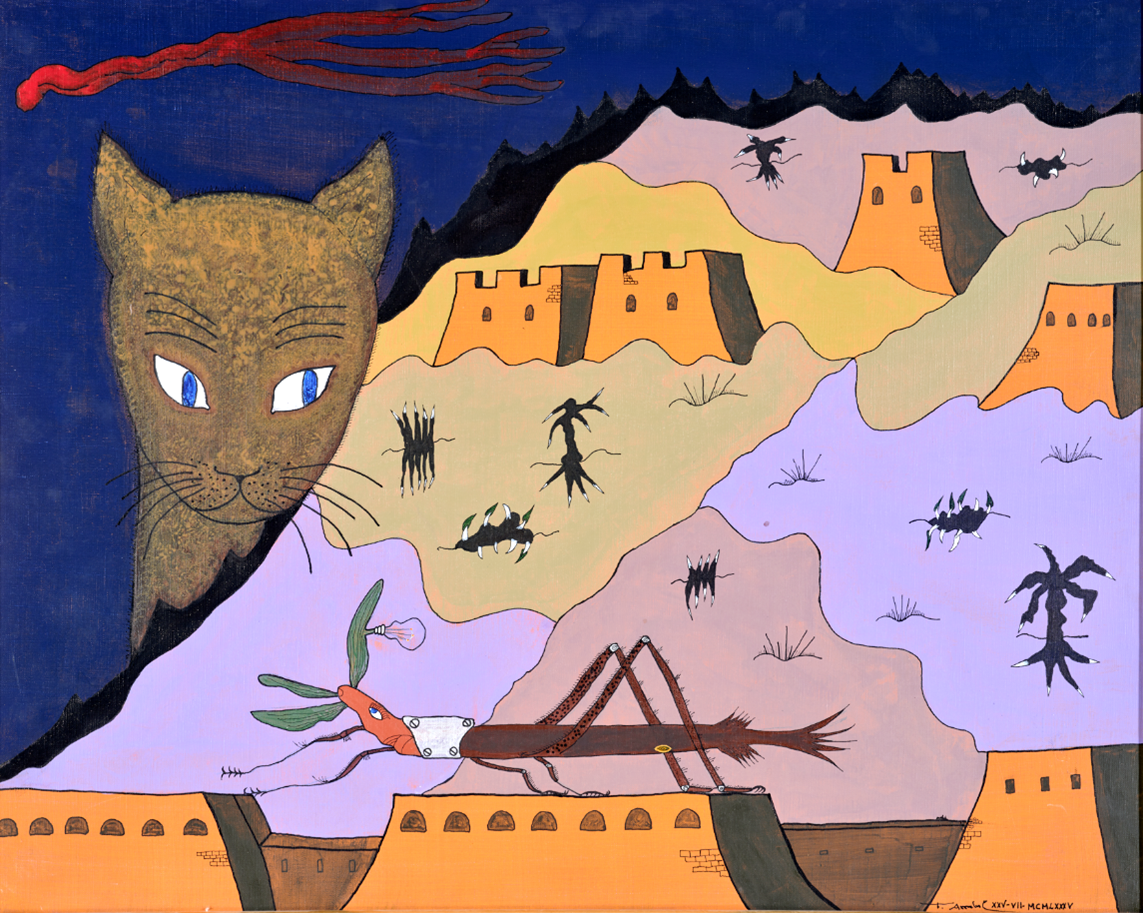
Amours impossibles
1985
Acrylic on canvas
65 x 81 cm.
AR007

Amours impossibles
1985
Acrylic on canvas
65 x 81 cm.
AR010
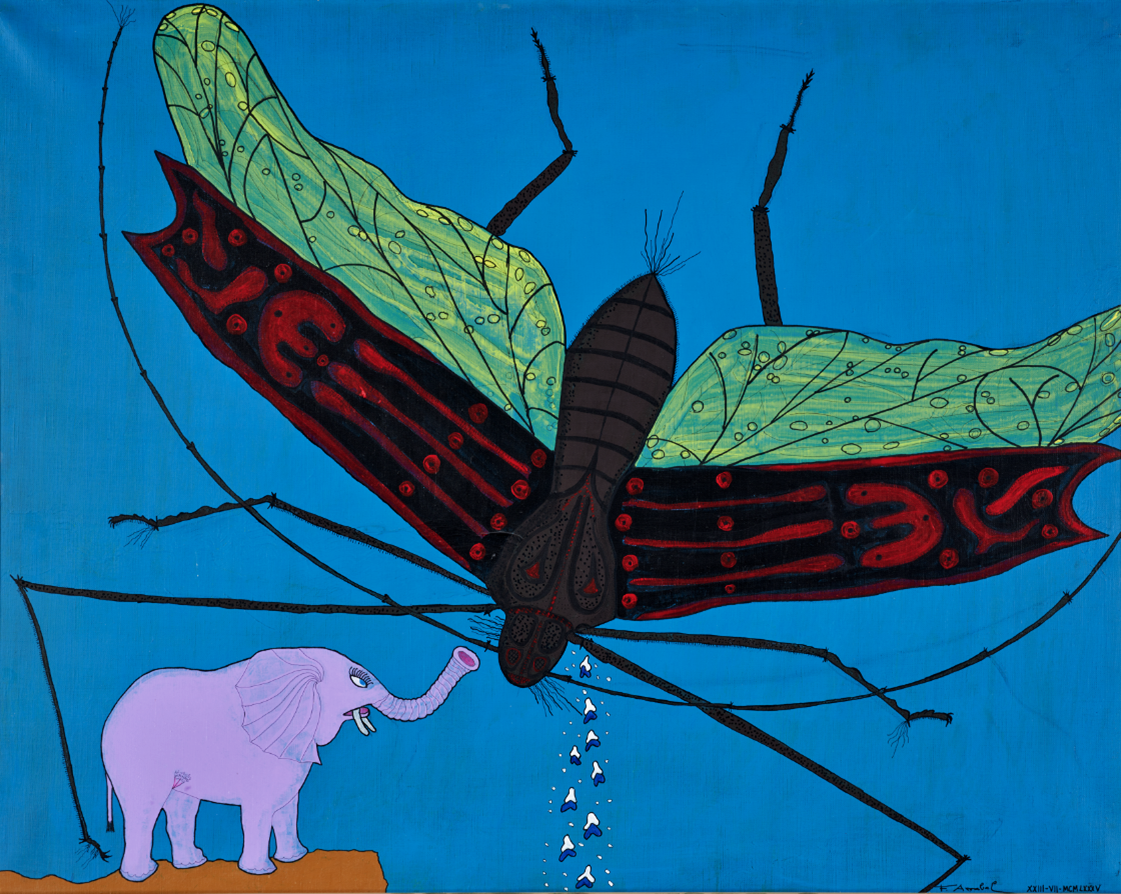
Amours impossibles
1985
Acrylic on canvas
73 x 92 cm.
AR011
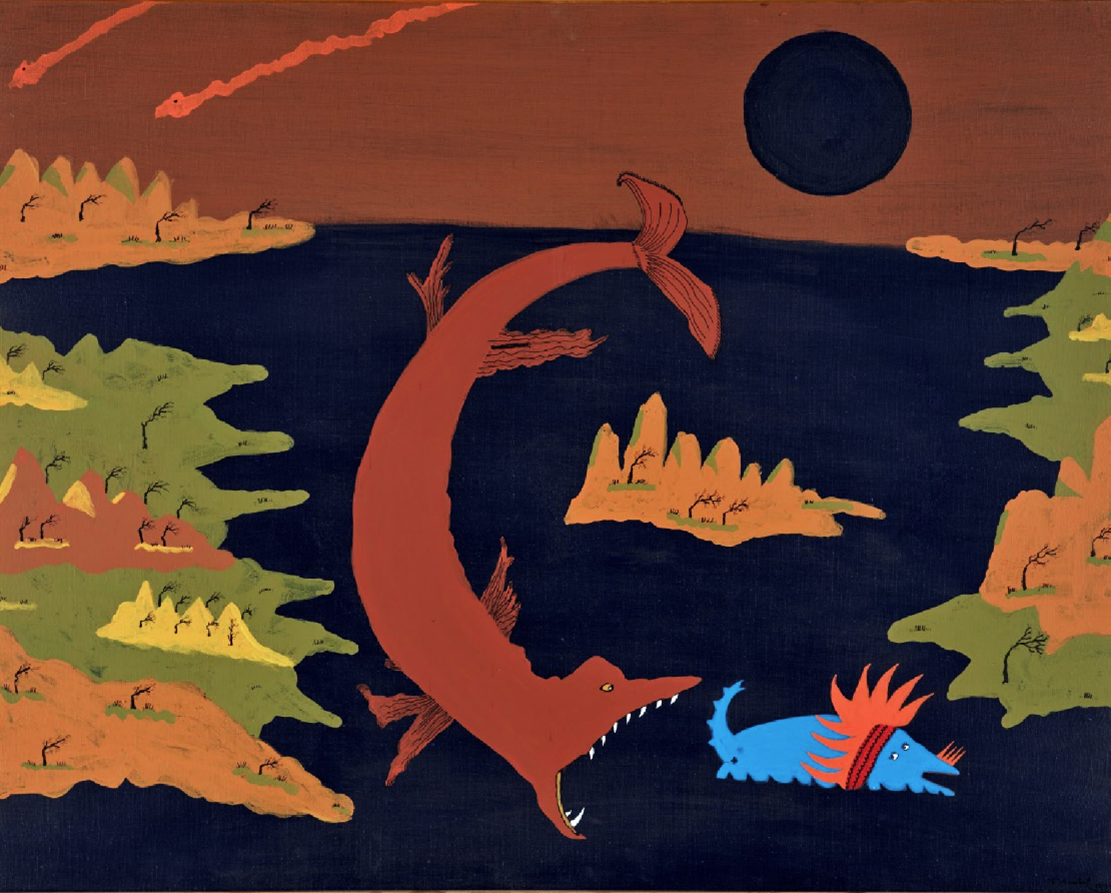
Amours impossibles
1985
Acrylic on canvas
73 x 92 cm.
AR011
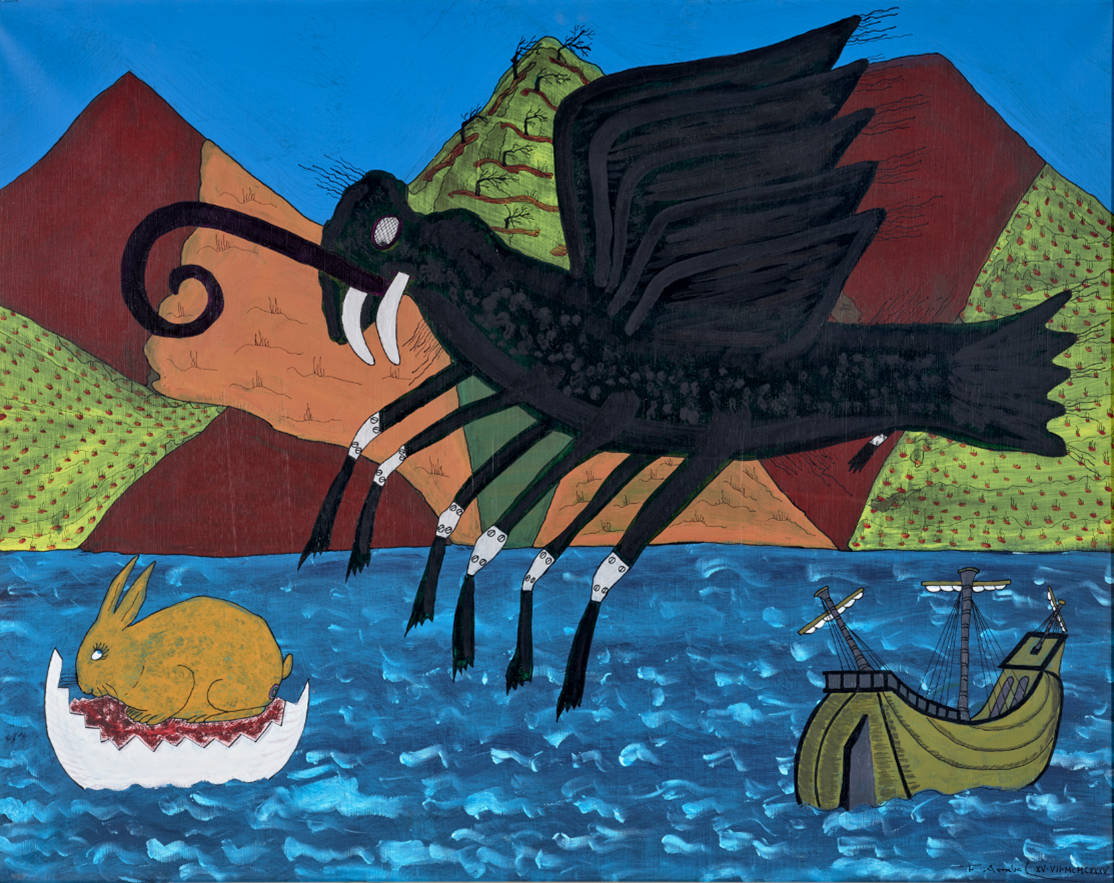
Amours impossibles
1985
Acrylic on canvas
73 x 92 cm.
AR013
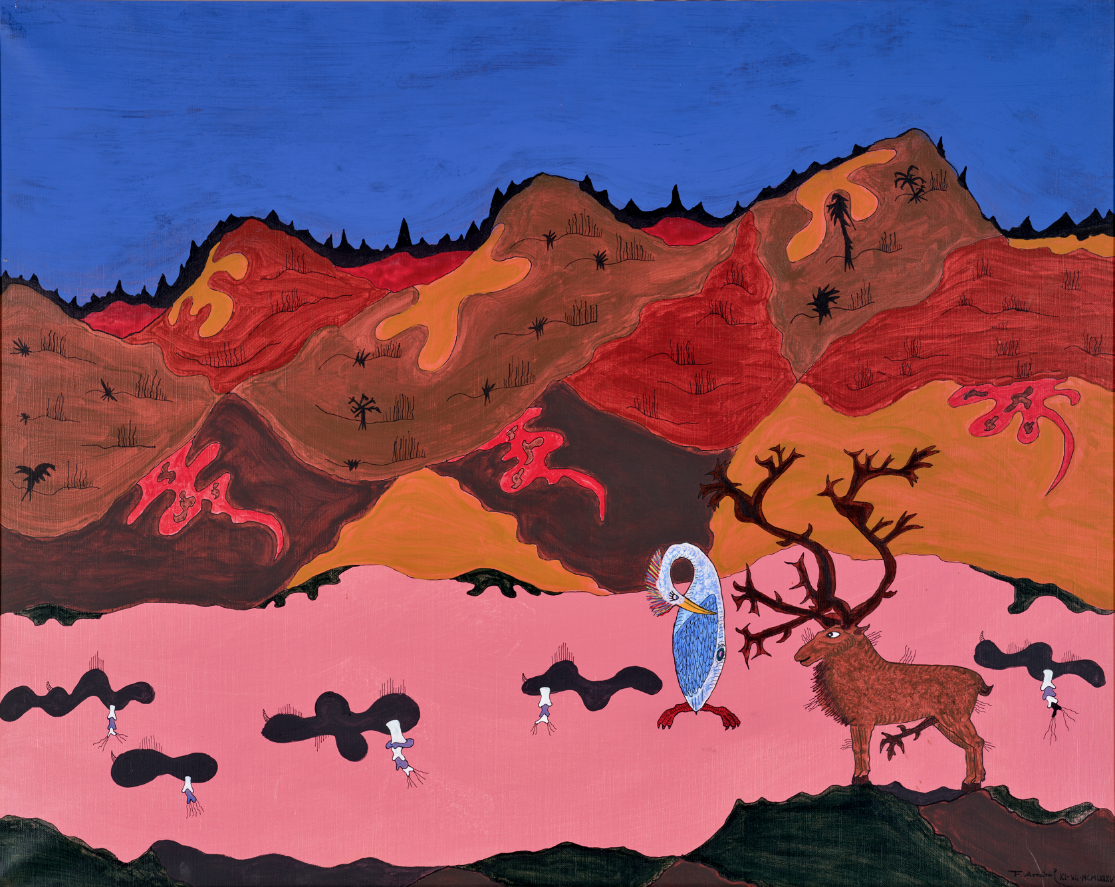
Amours impossibles
1985
Acrylic on canvas
73 x 92 cm
AR015
“Contemplating his work, I reflected on the fact that the painter Fernando Arrabal has always thought in images: his prose and verse, the theater, his pictorial work, of course, but also his photographic work, friendships and interests, his own voice always distilling to explain the extraordinary images that have constituted his being as a writer. Without forgetting his close ties with the history of the art of his time, of which he has been the undisputed protagonist, although it is a little known subject in Spain (“Cuenca is a perfectly pataphysical city”, I heard him say one day while he was blowing a kiss to Antonio Perez, another pataphysicist).
After all, it is well known that true art is that capable of suspending meaning, as an abandonment of meaning in the search for meaning. Retaining the conclusions and, in this way, reopens thought again. His ability to access that other saying through this silent choreography of impossible loves, is like a voice that lacks beginning or end, that mute orchestration of Mallarmé, voice dispossessed from the bodies, voice speaking at the same time several times at the same time. The enunciation of a speech that gives to see, as a partition of voices these images”.
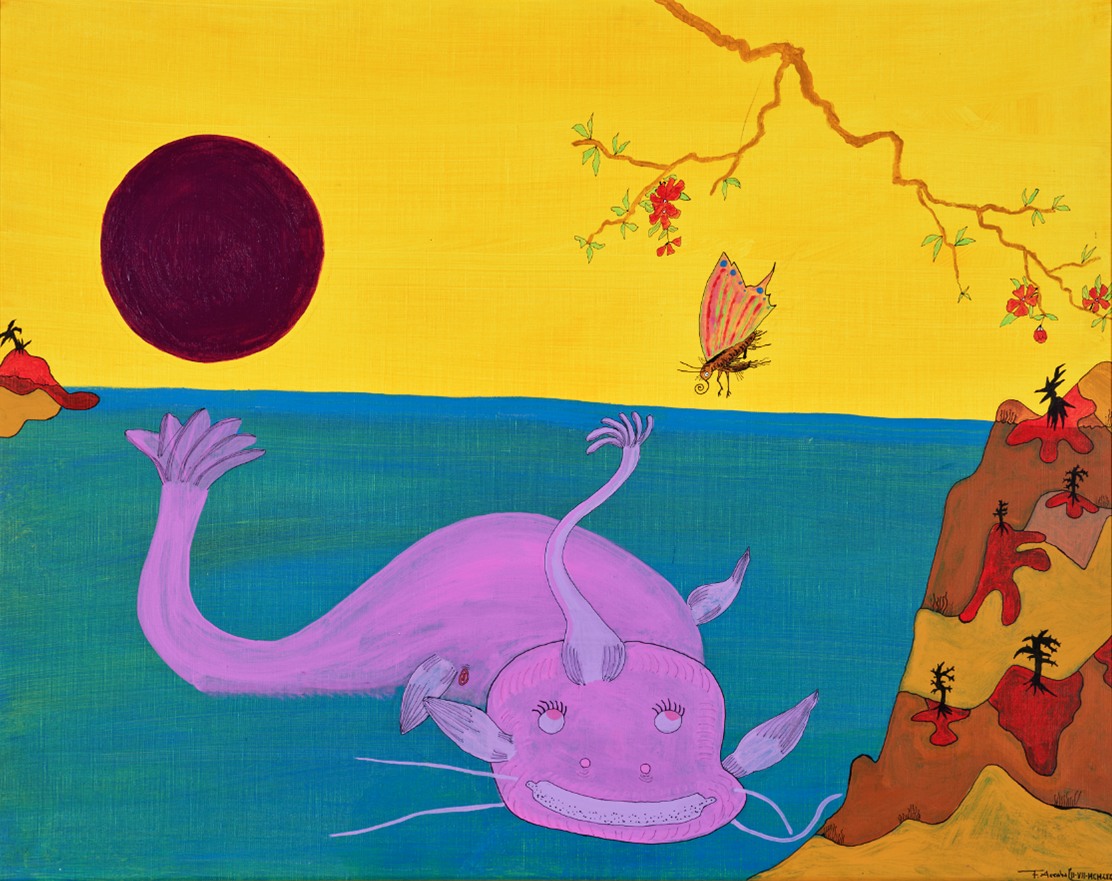
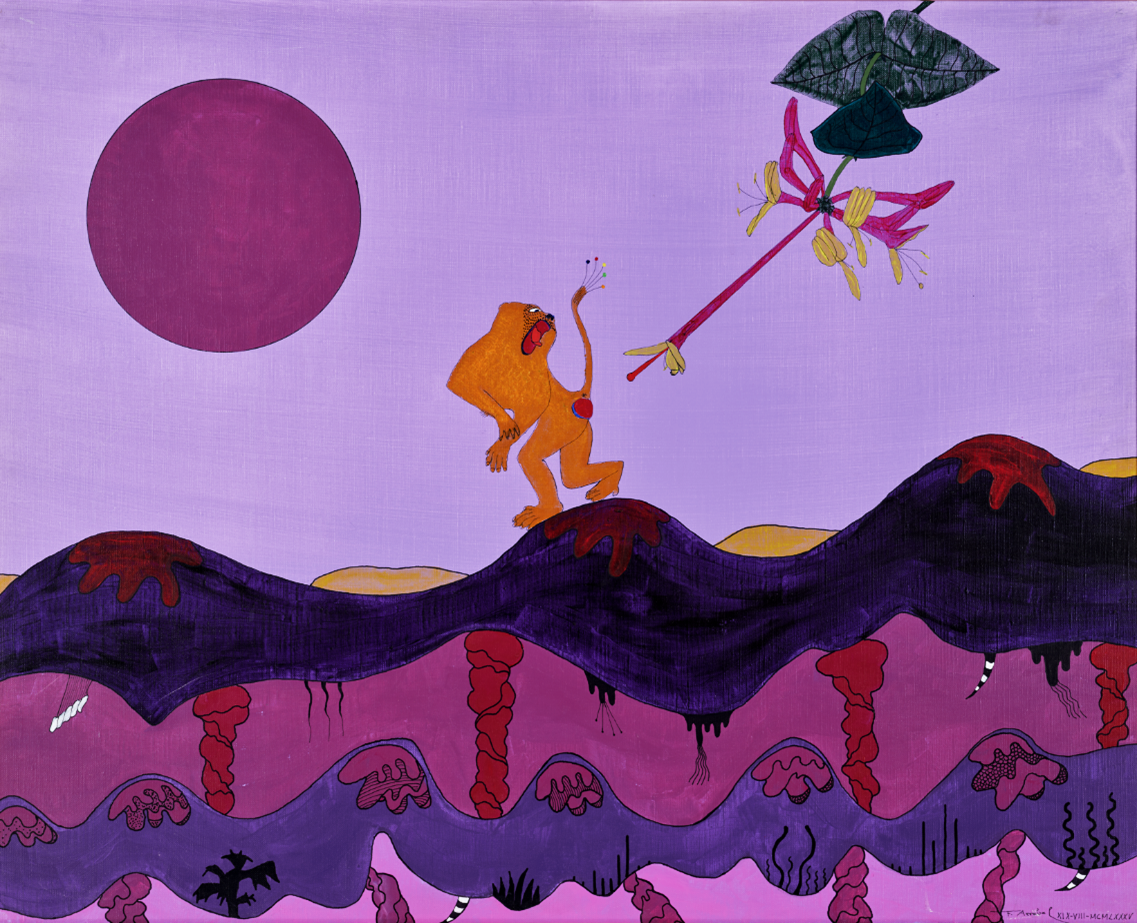
“Inside and outside the history of painting, a hiatus of strangeness composing his work as a proximity that was inaccessible, as the display of an interval between the painter and his (also) extraordinary fables, “mundus est fabula”, in the end the sense of the images is nothing more than an appearance, rather the resonant images remain in the space of the outside, as one who decentralizes the images that enunciate, that look without turning away an inner voice that is constituted as a territory conducive to the exercise of questions. Transit of a painting that resembles a compendium of stories in succession of effects of strangeness, thoughts that swiftly move away from the paintings that enunciate it and, thus, these images considered as a duplicity of revelation, that which veils us in revealing, the veil that reveals by veiling, the initial unfolding that then allows us to find ourselves in front of the figurative thing.
Painting as a decalogue of inaccessible possibilities, a promise of meaning, a work possessed by restlessness and discomfort, in the manner of the expression of the unspoken song of an irreducible ambiguity”.
Alfonso de la Torre, 2023.